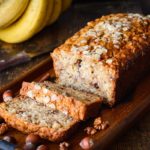Baking cookies can be a fun experience but it can be tricky to get perfect cookies every time. Whether you are baking plain cookies or chocolate chip cookies, even following the recipe to the letter each time can result in cakey cookies or even puffy cookies.
Many factors can make your cookies too puffy. In this article, we will look at what these factors are and how to prevent them.
What Makes Cookies Puffy?
Let’s look at the numerous factors that can make your cookies puffy. Even if you follow the most perfect cookie recipes, these tricks will help you when baking cookies.
Too Much Air Into The Dough
The most common factor for puffy cookies occurs while you are creaming butter. When you make your cookies, you will need to mix room temperature butter and sugar to blend them smoothly and evenly.
The easiest and quickest way to do this is with a high-speed mixer, but if you do this the wrong way you can get too much air into your butter and sugar mix. If there is too much air in your cookie dough, it will make your cookies puff when they’re baked.
To avoid this, you shouldn’t over-mix your butter and sugar. Pay close attention when creaming butter so that you don’t do it for too long.
It’s important to follow the recipe when making your cookies, but ensure that you only mix the butter and sugar for as long as you need to and stop as soon as everything is blended.
You don’t want to incorporate air into your dough so don’t be tempted to mix for a bit longer than you need.
Using Cold Ingredients
When you make your cookie dough, ensure that all of the ingredients are at room temperature. You will need to keep ingredients such as eggs and butter in the fridge to keep them fresh, but make sure that you take them out of the fridge before you make your cookie dough early enough.
Dairy ingredients such as eggs, butter, and milk, should all be taken out of the fridge about 30 minutes before you begin making your dough. Using room temperature butter will make it easier to mix into the cookie dough, also.
Even if these ingredients have been in the refrigerator for a few days, this should be enough time for them to get to room temperature.
Flat Cookies On Your Cookie Sheets
After you’ve mixed your cookie dough you will need to put your chilled dough onto a baking sheet for baking in the oven.
Many people just put chunks of dough onto the parchment paper on the cookie sheet and allow it to stand in high dollops when they’re baking cookies. However, this can lead to puffy cookies after they’ve been baked in the oven.
Instead, you should flatten cookies on the sheet with a spoon or a fork ready for baking. Get your cookies spread across the baking sheet. This makes cookies flat even before baking has started and prevents them from puffing in the oven.
Don’t Use Shortening
Many cookie recipes can include shortening as one of the ingredients. However, shortening can result in cakey cookies.
If your recipe calls for shortening, then you can substitute this for other ingredients such as unsalted butter. By substituting salted butter in your recipe, it will make your cookies flatter.
Don’t Use Too Many Eggs
Be careful when making cookies as it is very easy to use more ingredients than your recipe calls for. It’s very easy to use more eggs than you need and too much egg will result in puffy cookies.
If the recipe calls for only one egg or egg yolks, make sure that’s all the eggs you use. Extra egg won’t ruin your cookies or make them inedible, but it will make them puffy.
Don’t Use Too Much Flour
As well as using too many eggs, using too much flour can also make cakey cookies. Take great care when using measuring cups to measure flour and always double-check your measurements.
Too much flour will make cakey cookies so don’t overload your measuring cup.
You might find that the cookie recipe you have will work better with a little less flour than the recipe calls for. If you follow the recipe to the letter and the cookies are still too puffy, you can try using less flour the next time you bake them.
It may take a little trial and error to get enough flour and don’t be tempted to use more flour. Most recipes call for all-purpose flour and if the recipe doesn’t specify the type of flour, you can assume that it is all-purpose flour that you need.
Change Your Ingredients
Different cookie recipes can call for slightly different ingredients. There is no one definitive way to make cookie dough, so don’t feel afraid to experiment a little.
For example, you can reduce the amount of leavening agent such as baking soda or baking powder.
Using baking powder is important, but too much baking soda or baking powder can make chewier cookies and it’s an ingredient that you can easily reduce.
Some recipes do include too much baking soda or baking powder and it’s also very easy to accidentally use too much baking powder.
Final Thoughts
There are many reasons why your cookies can become puffy. If you want a crispier cookie or chewier cookie that doesn’t have such a fluffy texture then you should avoid using too much flour, eggs, and baking powder or baking soda when making your dough.
Although you should always follow your recipe, don’t be afraid to adjust it slightly if it results in cookies that are puffier than you like. For example, you can leave out or reduce the leavening agent from the dough.
Many of these tips are universal for all baked goods too, not just cookies and chocolate chip cookies, so keep them in mind whenever you are baking.










